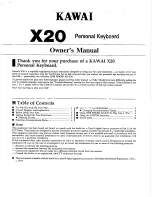
T
ROUBLESHOOTING STEPS
The troubleshooting steps below are arranged alphabetically by title.
Check Coax Connections
1. Check connections
a.
Run a channel scan to verify tuner picks up all
channels
b.
Replace cable if pinched or flattened
c.
Replace screw fittings or crimp fittings with
compression fittings
<Figure 1>
d.
Confirm the cable does not bend 90 degrees or more,
install 90 degree coax adaptors or reroute path if
needed
e.
Verify the cable does not cross the generator within
the console, reroute with zip ties if needed
2. Measure coax signals using a cable signal reader
Note
: Normal coax signal strength reads 10dBmV (+ or –
2dBmV)
a. Using a cable signal reader, measure:
i.
At the wall outlet
Note:
If readings are below the normal range
from wall, assist the customer with contacting
an a/v company to troubleshoot
ii.
Before and after the splitter (if one is present)
iii.
Where the coax cable enters the frame
iv.
Where the coax cable hooks to the tuner
within the console
b. If readings are below the normal range, evaluate the
coax connections. Once readings at each point in the
coax run are within the normal range, end
troubleshooting and test unit
c. If initial readings from all four decibel readings were
within the normal range, collect Windows logs
Check Console Cable Connection at UCB and MCB/LCB
1. Check communication connections at console and at lower
board
<Figure 2>
,
<Figure 3>
i.
Ensure fully plugged in
ii.
Realign if connection is skewed
2. Examine cable and replace if pinched, flattened, or broken
3. Test
<Figure 2>
<Figure 1>
<Figure 3>
3|
Revision Date: [Enter Date] | Revised by: [Enter name or initials]





























